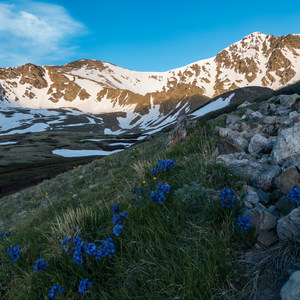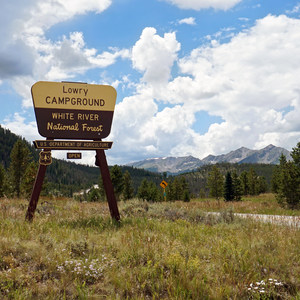You are here
First summited in 1861 by Charles Parry, a botanist and surgeon who previously worked on the United States-Mexico boundary survey, the summit of Torreys Peak rests at 14,274 feet. Upon his successful ascent of Torreys Peak, Parry chose to name it after his colleague John Torrey, who after 11 years finally laid eyes on the mountain in 1872. Despite the rich pioneering history and mining activity that populates many of Colorado’s remote mountains, Torreys sees more traffic than ever before. With the majority of ascents taking place in the summer via foot, there are many long descents that pepper the mountain's different aspects, attracting thrill-seekers year round.
Depending on the time of year, the access to Torreys is either welcoming (especially those with high-clearance four-wheel drive vehicles) or a much more involved endeavor. If you'll be attempting to access the peak in the winter, most skiers will find they cannot drive any farther than the main parking area at the Bakerville exit. Touring the 4 miles to the base of the mountain along Grizzly Gulch is the shortest option to access the north aspects of Torreys.
Including the Emperor and Tuning Fork couloirs, the north face is briefly visible from Interstate 70 and guarded by surrounding peaks. Those determined to breach the mountainous barriers on the lee side will find some of the longest continuous descents in the state of Colorado. The Tuning Fork descends nearly 3,000 feet from the summit down to the northern apron of the mountain. Rivaled by only a handful of other descents in the state, it is part of an exclusive group of continuous ski descents exceeding 2,500 feet of vertical drop.
You have to earn your turns, and you must ascend every single foot that you descend, which makes the Tuning Fork a significant climb. A friendly descent with no significant objective hazards, no no-fall zones, and a maximum 40-degree slope angle, you will be rewarded with more skiing than your fatigued legs may be able to handle if you are determined. First-world problems!
If boot-packing up 3,000 feet of vertical in just under a mile doesn't sound like your idea of a good time, an alternate route to gain the summit of Torreys does exist. Although more mileage overall, the elevation gain is more gradual, and the access road is far more consistent than that of Grizzly Gulch. By starting at Bakerville and continuing up the road all the way to the trailhead for Greys, skiers can gain the ridge and approach the summit of Torreys from the south. Of course, in this cirque, skiers also may access the Dead Dog, Lost Rat, or Hourglass couloirs, to name a few. Try not to get sidetracked by all the awesome potential. The only issue with this approach: Ultimately skiers will have to hike or tour the 3 miles back out to the main road from the north side of Torreys.
Although advertised as a couloir, the Tuning Fork is very wide and doesn’t mandate any technical skiing expertise to safely descend. For those with a high level of fitness and an intermediate to advanced skiing ability, the Tuning Fork delivers. As a result, since the Tuning Fork is north facing and at a high elevation, it is a perfect late spring decent.
All in all, the views are spectacular, the climb truly makes you appreciate the ski, and with so many alternate options in this zone, you can’t really go wrong.
As always be safe, and have fun!











Comments
Sign In and share them.